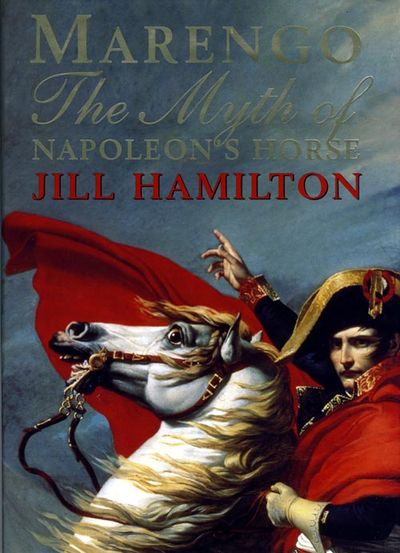Marengo: The Myth of Napoleon's Horse
In telling the poignant story of Marengo, Jill Hamilton shows an unexpected side to the Emperor. She explores Napoleon’s enormous regard for horses as well as why it was Marengo, and Marengo alone, who became part of the Napoleonic legend – not Jaffa, Ali, Désirée or any of Napoleon’s many mounts.
With a bullet lodged in his tail and the imperial cipher of a crowned letter ‘N’ burnt on his left flank, a diminutive Arab stallion drew crowds to Pall Mall, London, in 1823. Sightseers came to gaze at the horse advertised as ‘Bonaparte’s personal charger’, whose career had spanned the whole of the Napoleonic Wars, who, to the sound of marching songs had trotted, cantered and galloped from the Mediterranean to Paris, Italy, Germany and Austria, and at the age of nineteen, had walked three thousand miles to Moscow and back. Since then, both dead and alive, this horse with the same sonorous name as Napoleon’s great victory, Marengo, has been a star exhibit in Britain. At London’s earliest military museum his articulated skeleton was seen by Queen Victoria and displayed as the horse that had carried his master at Austerlitz in 1805, at Jena in 1806, at Wagram in 1809, in the Russian Campaign of 1812, and at Waterloo in 1815. For over 150 years one of his hooves has stood on a gleaming sideboard in the Officers’ mess at St James’ Palace. Today his skeleton, described as ‘Napoleon’s favourite horse’, is the sole equine exhibit in the vast Waterloo Gallery at the National Army Museum in Chelsea, London.
Horses for Napoleon were both utilitarian and glamorous. He used them for recreation, for speed and as majestic pedestals on which he appeared as a larger-than-life figure, but mostly as unstoppable machines of war. As he turned the ramshackle cavalry of the Revolutionary army into the most remarkable cavalry force in history he made spectacular use of horses in battle. But Jill Hamilton has uncovered a secret, hidden away for over a century, a secret which brings her inspiring and moving history to a devastating conclusion.












4thestatebooks